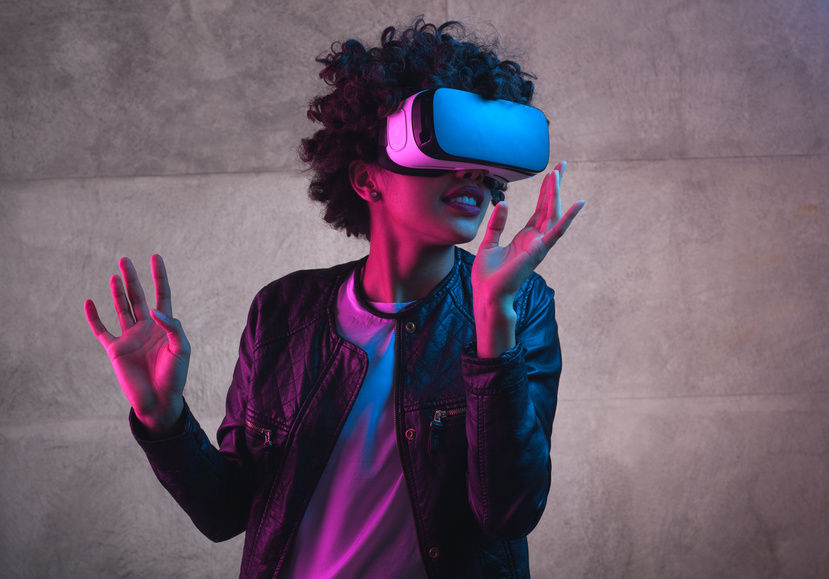 The old saying goes that you have to face your fears in order to conquer them. While that sounds nice, it’s an unrealistic directive for many people. If you’re afraid of something, it’s probably for a good reason and confronting that fear may trigger physical symptoms akin to what you would experience with post-traumatic stress disorder or cause an anxiety-inducing reaction that is ultimately more harmful than helpful.
The old saying goes that you have to face your fears in order to conquer them. While that sounds nice, it’s an unrealistic directive for many people. If you’re afraid of something, it’s probably for a good reason and confronting that fear may trigger physical symptoms akin to what you would experience with post-traumatic stress disorder or cause an anxiety-inducing reaction that is ultimately more harmful than helpful.
Luckily, today’s modern technology allows us to circumvent those terrifying conditions by using virtual reality programs. A recent survey showed that 71% of participants love celebrating their birthday, at any age. VR devices could soon become commonplace among gift-givers — but they are much more than just fun tech gifts. Lauren Mechling from The New Yorker recently wrote about her own experiences with using virtual reality to help conquer her fear of public speaking, also known as glossophobia.
When someone has glossophobia, they experience symptoms that can debilitate an individual’s ability to speak in public. Mechling details how her glossophobia started showing itself when she was in her mid-thirties and was working at a company where well-spoken speeches could make or break a career. Mechling would practice just two or three sentences to say aloud in a meeting, but when the time came for her to speak she would start sweating and white flashes would flood her field of vision. For the remainder of the meeting, Mechling would be fighting back tears and not paying much attention to what was happening in the room.
As Mechling experienced first-hand, a fear of public speaking can significantly impact your career. In fact, those who have this fear make about 10% less, on average, than those that don’t fear speaking to large groups. Mechling was able to shift her career path so that she spends her days in a quiet co-working space, but with an impending book tour she needed to figure out how to conquer her fear.
That’s when she contacted Jeff Marshall, the designer of Ovation VR. This virtual reality program submerses the user in a Sims-esque environment. Users can choose a range of scenes in which to practice, from a handful of people in a boardroom to a large audience in a conference hall. As public speaking typically involves a prepared presentation of some sort, the system allows you to import items like notecards, teleprompters, and powerpoint slides.
The program will record each session, allowing you to look back on your presentation and see how you did. It can also give you feedback on using filler words and certain hand gestures. All of these features helped Mechling tackle her first in-person appearance with ease, or at least more ease than she had ever experienced before.
Features similar to these in other VR programs are helping those with depression face a common, but undertreated, symptom. Michelle Craske, a psychiatry researcher at the University of California, Los Angeles, is testing how virtual reality can curb anhedonia. This symptom of depression and other mental health conditions is characterized by a lack of interest or ability to feel pleasure.
By using VR programs, Craske and her team are putting patients in pleasant scenarios and coaching them to focus on the positive parts. For instance, they’ll immerse patients in a picturesque forest or a scene with beautiful paintings. Studies have found that looking at a lovely painting can increase blood flow to the “joy response” part of the brain by 10%, similar to when you look at a loved one. By restructuring what their brain pays attention to, the team hopes to encourage patients to plan positive activities and soak up the good feelings in the process.
This methodology is rather similar to how VR addresses phobias. If an individual is afraid of driving a car because of the 5.5 million car accidents in the U.S. every year, VR can instead help that person associate driving with pleasant sounds, sights, and experiences. In short, it teaches the brain to focus on the good rather than the bad.
The data from Craske’s study has not yet been able to determine whether VR can make a meaningful difference in the treatment of anhedonia. What is apparent is that technology is becoming increasingly popular for mental health care. And the designers who create these programs are certainly rising to the challenge.






